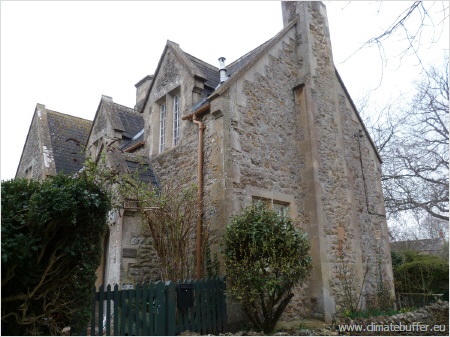Coleshill Estate
General Description
Coleshill was chosen as one of two villages to be part of the National Trust's Low Carbon Villages project. The aim of the project was to work with communities to understand their carbon footprint and to share positive and practical solutions to reduce the carbon footprint of their homes and community.

Coleshill Village - a low carbon village
(Photo: Katherine Hearn, National Trust)
In the Low Carbon Villages (LCV) project, along with energy partner npower who provided £600,000 of funding, the National Trust worked with In the Low Carbon Villages (LCV) project, along with energy partner npower who provided £600,000 of funding, the National Trust worked in two Trust owned villages Coleshill in Oxfordshire, and Cambo in, Northumberland. These villages have old cottages and buildings which can pose challenges in introducing effective energy-saving measures and small-scale renewable technologies. Through a process of engagement over a three-year period, LCV aimed to develop positive and practical solutions that could set villagers on a journey to low-carbon living.
The study group toured Coleshill village with the Project Co-ordinator, Jo Trussler. Jo described improvements to cottages such as new loft insulation, draft-proofing, major distribution of low-energy light bulbs and new energy-efficient boilers and fridge-freezers. A biomass boiler will use wood from the estate to heat the estate office and shop, and there are other village-wide initiatives such as a new orchard and ‘smart’ driving lessons.

A traditional stone building in Colehill
(Photo: Katherine Hearn, National Trust)
The project started in 2010 and was finished in 2012.